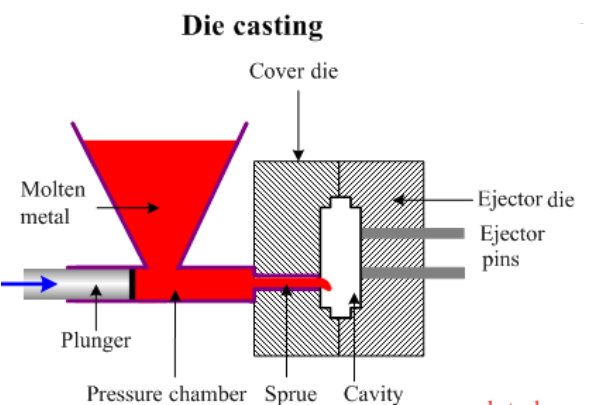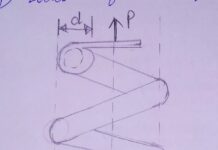Die Casting Alloys:-
The Die casting process consists of forcing the molten metal into a closed metal die. This process is used for metal with a low melting point. Die casting alloys are made from zinc, aluminum, and magnesium. Zinc die castings are more popular due to their high strength, long die life, and moderate casting temperature. Aluminum and magnesium die castings are lightweight but their casting temperature is higher than that of zinc die castings.
The advantages of the die casting process are as follows:-
- Some parts can be made economically in large quantities.
- Surface finish obtained by this method is excellent and requires no further finishing.
- Very thin sections or Complex shapes can be obtained easily.
The drawbacks include the cost of dies and restriction on the size of the components since only a small part can be die-cast.
Ceramics:-
Ceramics can be defined as a compound of metallic and non-metallic elements with predominantly “ionic” interatomic bonding. The word ceramic is derived from the Greek word “Queremos” which means “Potter’s clay”. Traditionally ceramics includes refectories, glass, abrasives, enamels, and insulating materials. however, many substances which now classed as ceramic in fact contain no clay. Modern ceramic includes metal oxides, carbides, borides, nitrides, silicates.
Advantages of modern engineering ceramic are as follows:-
- Most ceramics possess high hardness, this increased hardness is due to the operation of a strong covalent bond between the atoms in their crystal structure material like silicon carbide and Boron nitride are the example of the ceramics with high hardness.
- Ceramics have a high melting point. This property makes excellent refractory materials for the lining of the Furnace.
- Ceramics are good thermal insulators because, in most ceramics, there are no free conducting electrons, and heat is conducted only by the transfer of vibration energy, from one atom to another atom.
- Ceramics have extremely high electrical resistivity. Hence, they are used for electrical insulators.
- The densities of ceramic are low compared with those of Engineering metals. This results in lightweight components.
- Ceramics are chemically resistant to most acids and alkalis and organic substances. They are also unaffected by oxygen. This increase the durability of ceramic component.
Disadvantages of ceramics are as follows:-
- Ceramics are Brittle in nature. They are highly susceptible to stress concentration.
- In ceramics, ductility is almost zero.
- Ceramics have poor tensile strength.
- There is a wide vibration in the strength values of ceramics.
- Ceramics are difficult to shape and machine.




